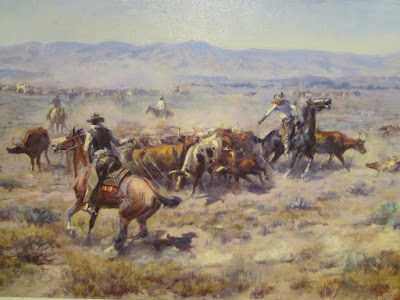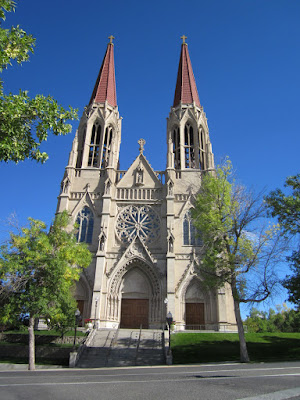Having spent two full weeks in the Black Hills and Badlands of South Dakota in the fall of 2015, we decided to pursue some of the other attractions.
Pierre, the State Capitol of South Dakota
When we are close to a state capitol, we always try to spend some time touring the capitol buildings and noting some differences and similarities. Entering South Dakota's Capitol Building we immediately noticed some similarity to the capitol building in Helena, Montana. Later we found out that the blue prints from Helena were used with some modification to construct this South Dakota Capitol.
The floor throughout the Capitol Building is covered with millions of hand placed mosaic tiles, put down by 66 workers. Each worker was asked to place one unique blue tile somewhere within their handiwork as a sort of signature. These tiles have been lost over the years and only 55 of their locations are known. We did find a couple of them as we walked through the building.
 |
| In 1989, the states centennial, the building was restored to its 1910 splendor. |
 |
| The dome of the rotunda is 96 feet high. |
 |
| The Marble Staircase is the centerpiece of the Capitol. |
 |
| The World War II Memorial presented as six bronze figures on a peninsula in the Capitol Lake. Capitol Lake is fed by an artesian hot spring, maintaining a 92 degree temperature year round. |
Dignity Statue in Chamberlain, South Dakota
This is a fifty foot tall stainless steel sculpture overlooking the Missouri River. Dignity, which is at a rest stop along I-90 near Chamberlain, was dedicated just days before we stopped.
 |
| Dignity |
 |
| She looks beautiful from the front or back, wrapped in a star quilt. |
The Corn Palace in Mitchell, South Dakota
 |
| 2016 Theme is "Rock of Ages" |
 |
| The murals are made up of corn, sorghum, wheat & rye. |













































